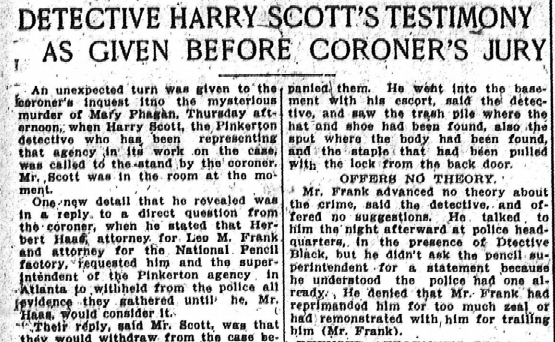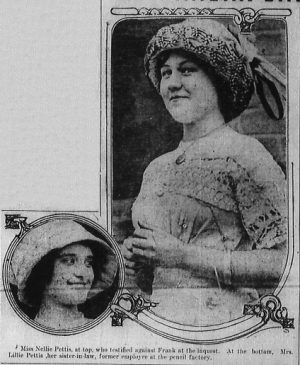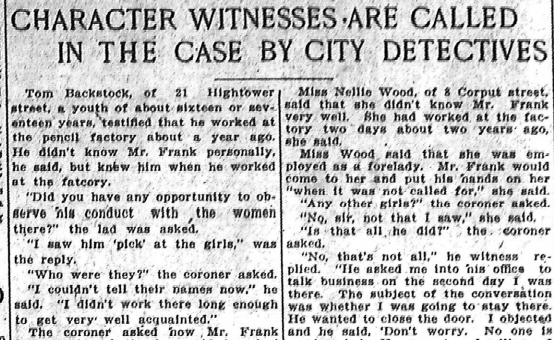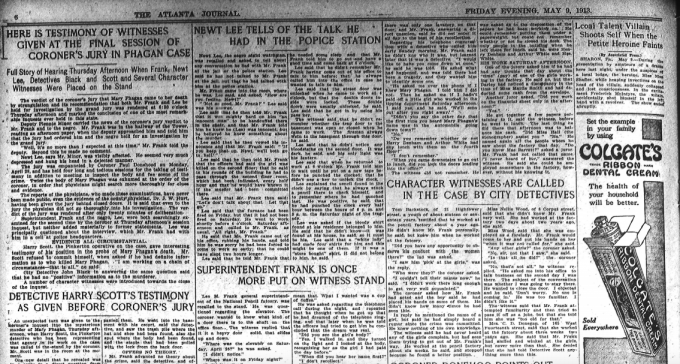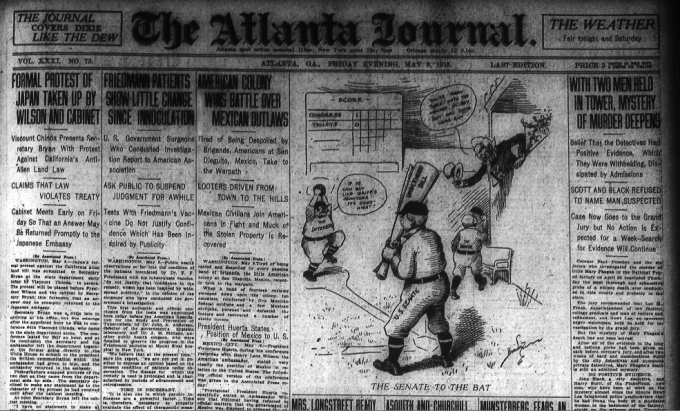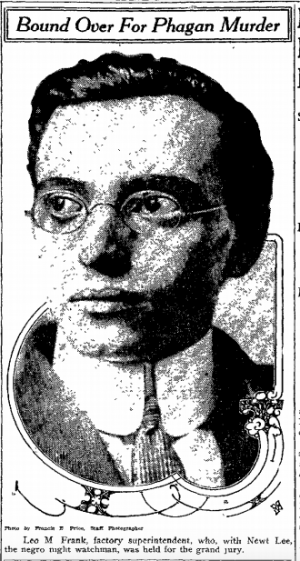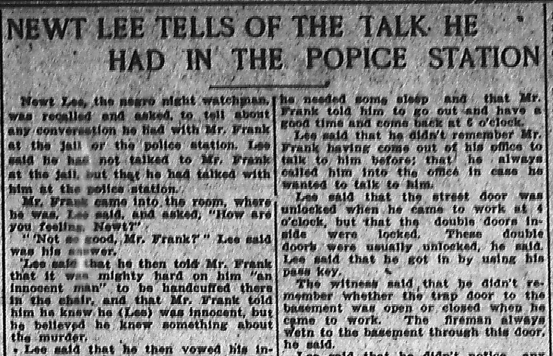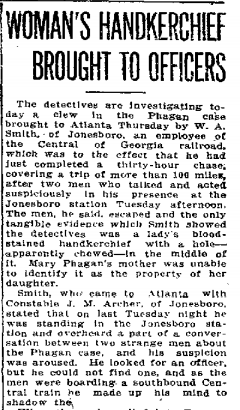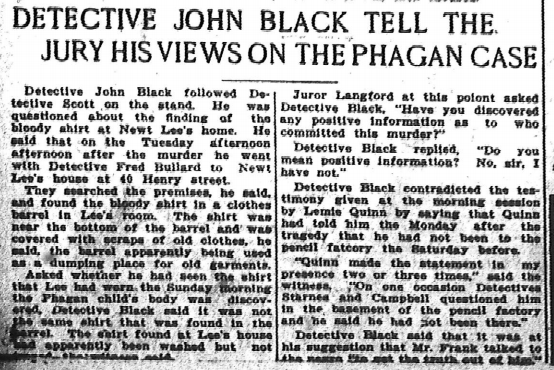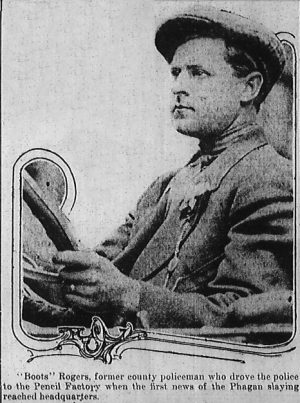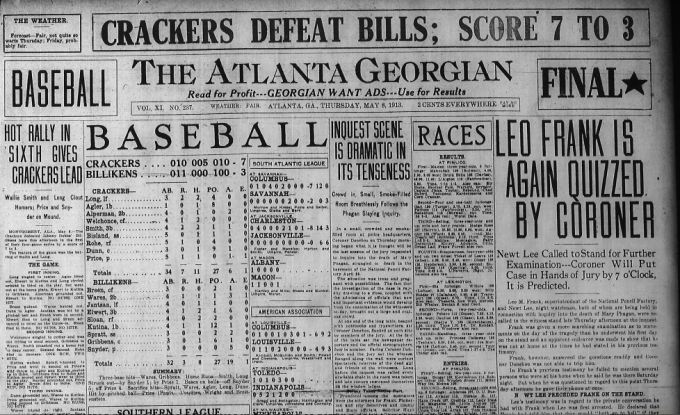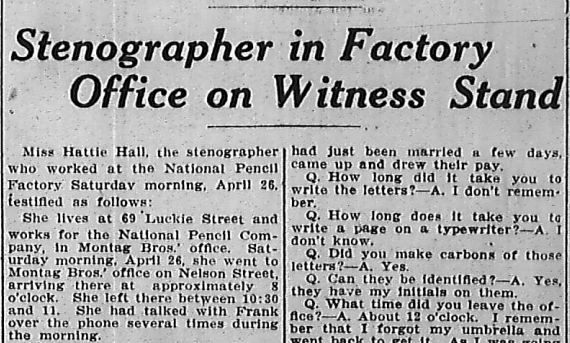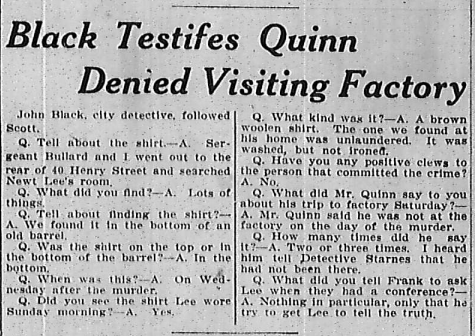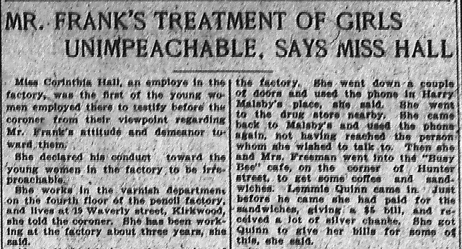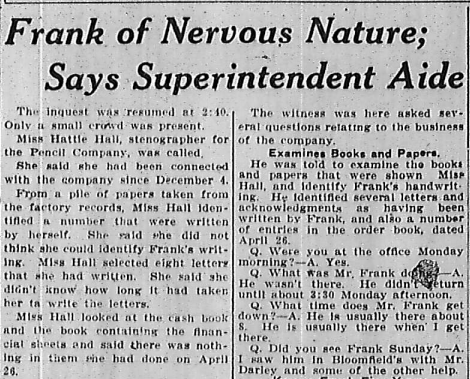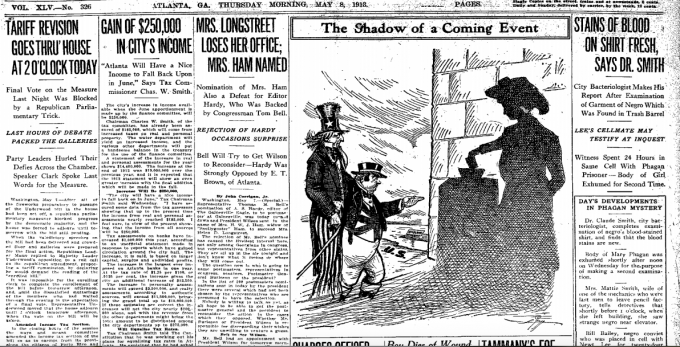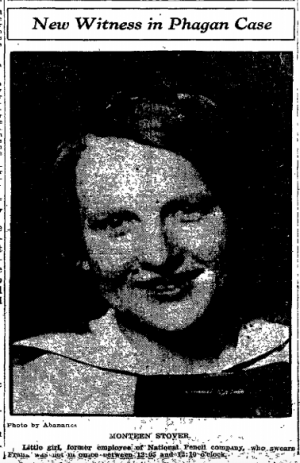
Monteen Stover. Little girl, former employee of National Pencil company, who swears Frank was not in office between 12:05 and 12:10 o’clock.
Another in our series of new transcriptions of contemporary articles on the Leo Frank case.
Atlanta Constitution
Saturday, May 10th, 1913
Testimony Considered Important by Officers Because Frank at the Inquest Stated on Stand That He Did Not Leave Between Noon on Saturday and 12:25. When Quinn Came to See Him.
SHE WENT TO FACTORY TO GET PAY ENVELOPE – POSITIVE OF THE TIME
New Evidence, Just Submitted to Detective Department, Leads Chief Lanford to Believe That Mary Phagan Was Murdered in the Basement — Woman Says She Heard Screams on Saturday Afternoon.
A new and important witness has been found in the Mary Phagan murder mystery.
She is Monteen Stover, a girl of 14 years, a former employee of the pencil factory.
After already having attested to an affidavit now in possession of the solicitor general, she will testify before the grand jury that on the day of Mary Phagan’s disappearance, she entered the pencil plant at 12:05 o’clock in the afternoon and found the office deserted.
Also, that she remained five minutes, during which time no one appeared. The building seemed empty of human occupants, she declares, and no sounds came from any part. Expecting to have found the superintendent, she says she went through both the outer and inner offices in search of Frank.
Testimony Important Declare Police.
The police say that this is valuable evidence because of the testimony of Frank at the inquest to the effect that he remained in his office throughout the time between 12 noon and the time at which Quinn arrived, 35 minutes after 12. Also, they recount his statement that Mary Phagan entered the building at 12:05, the time the Stover girl says she arrived. Continue Reading →

